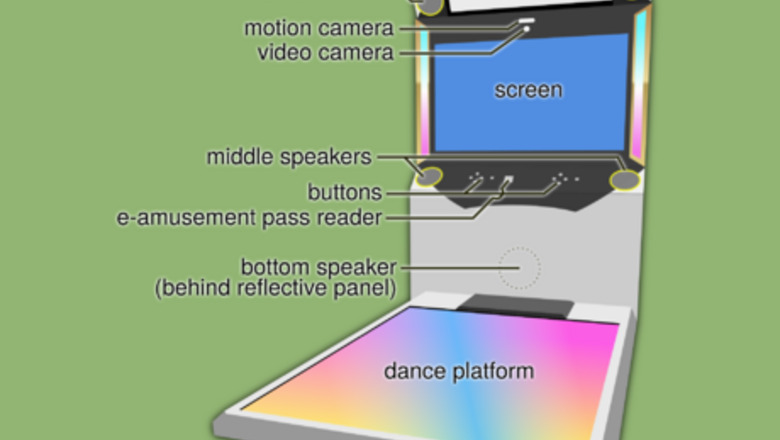
views
Getting Started
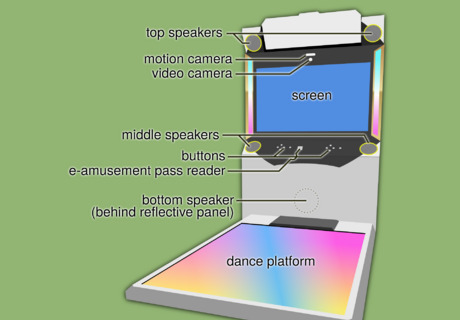
Find an arcade that has Dance Rush. A Dance Rush cabinet has a large screen and several speakers in the front, and a glowing transparent platform at the back. If you need help finding a Dance Rush cabinet, you can search for them online, whether in Japan or worldwide.
Find out what the prices are. Dance Rush has several modes with different perks, and some may be pricier than the others.
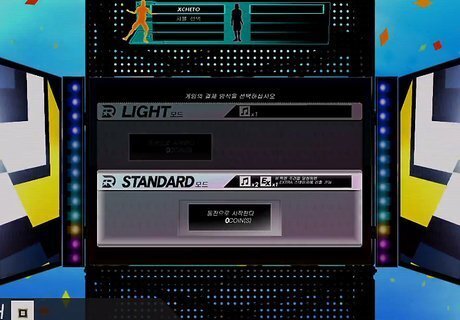
Know the different modes. Light mode lets you play 2 tracks (1 in the South Korean version) upfront. Standard mode lets you play 2 tracks but also gives you a chance to win an Extra Stage by scoring a combined total of 180% for those 2 tracks. Extra Stage limits the number of mistakes you can make. Premium mode lets you film yourself and apply special video effects. You can later download the video or upload it straight to YouTube. You must be at least 13 years old to use Premium mode. Local multiplayer is also available. If the arcade has multiple Dance Rush cabinets (and they are connected to each other), you can choose Battle Mode in order to link them together and play competitively. Even if not, you can play 2-Player Mode cooperatively, where players stand front-to-back and get one combined score. (You can play head-to-head in 2 pairs of players by combining these two options.)

Consider getting an e-Amusement Pass. The e-Amusement Pass is Konami's electronic pass to save your progress on Konami arcade games. Dance Rush uses this service, so in order to save your progress, you will need an e-Amusement Pass.
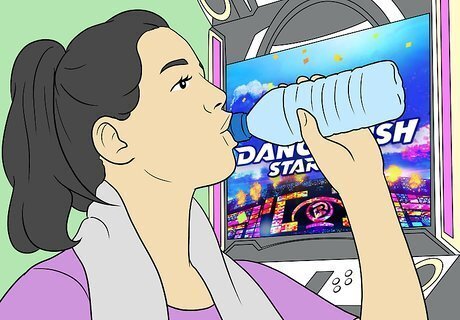
Prepare for the game. Most of the preparation is the same as preparing to do cardiovascular exercise: wear comfortable, athletic clothing; bring enough water to stay hydrated; and wear running shoes or flat-soled shoes as opposed to heels or sandals. The game is more intense than it looks at first.
Gameplay Basics
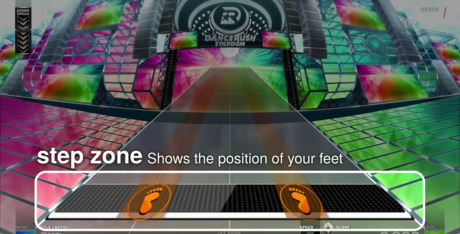
Familiarize yourself with the step zone. The step zone is the highlighted strip at the bottom of the screen. Observe that the orange footmarks on the step zone correspond with the left/right position of your feet. You can use them to readjust your position. The following notes will appear from back to front on the highway (playfield).
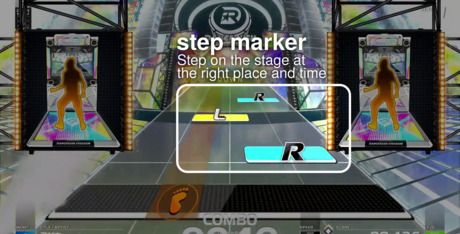
Step on steps. Steps are rectangular marks colored orange or blue and labeled with a letter L or R. When these reach the step zone, step anywhere in the corresponding area. The machine does not detect pressure, so it isn't necessary to stomp down hard. Orange notes with the letter L are meant to be stepped on with your left foot; blue notes with the letter R are meant to be stepped on with your right foot. However, the game does not care about which foot you use, so in a pinch, you could ignore the difference.
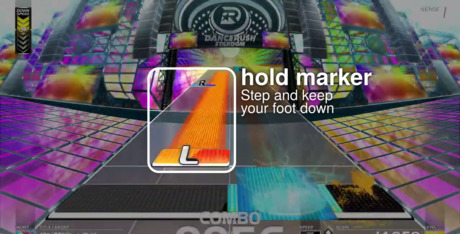
Keep your foot down all the way through Holds. Holds have an additional tail. Hit them as you would do a Step, then for the duration of the Hold, keep your foot down anywhere in the corresponding area.
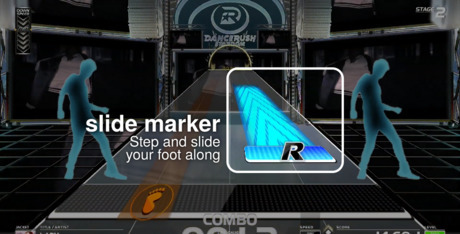
Glide your foot along Slides. Slides are like Holds, but they move diagonally. Hit one as you would a Hold, but slide your foot to keep it in range of the Slide.

Skid your foot along Skids. Skids are sharp, horizontal segments in the middle or end of a Hold or a Slide. When it reaches the step zone, sharply skid your foot in the direction of the Skid.
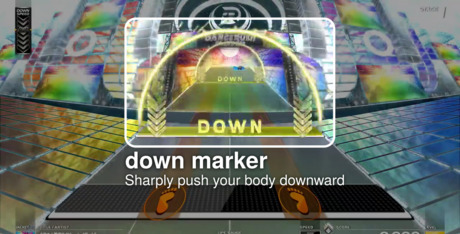
Bend your knees with the Downs. Downs are yellow with two parts: an arch above a mark spanning the width of the highway, with the letters "DOWN" in the middle. When it reaches the step zone, move the center of your gravity down in time. What matters is not the position of your center of gravity, but the speed at which you move it.
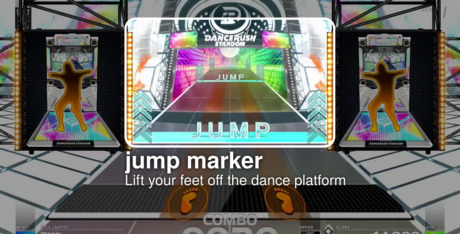
Hop above the stage with the Jumps. Jumps are aqua marks with the word "JUMP" in the middle. When it reaches the step zone, lift both feet off the platform. Long sequences of Jumps can be hit by leaving the platform. This is because the game does not detect when you release your feet, but simply checks if there are no feet on the platform.
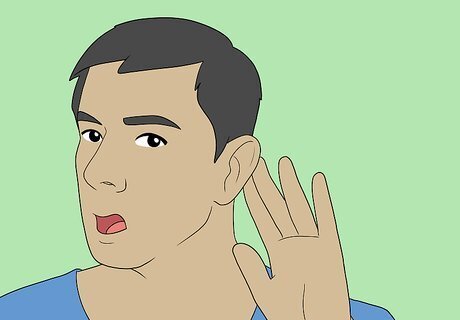
Get into the rhythm. A common mistake by new players is focusing too hard on the step zone. Instead, players should listen to the music and step to the beat, because the notes are synchronized to the music. The same goes for all rhythm games.
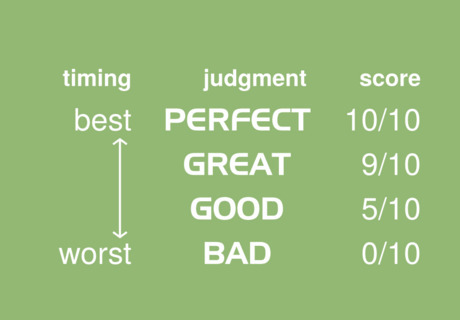
Learn the timing judgment. In order from best to worst timing, the judgments are Perfect, Great, Good, and Bad. You could get a Bad by stepping too early or missing the note entirely. A Great is worth 9/10 of a Perfect. A Good is worth half of a Perfect. A Bad gives no points. Skids, Downs, and Jumps only give you a Perfect or a Bad.
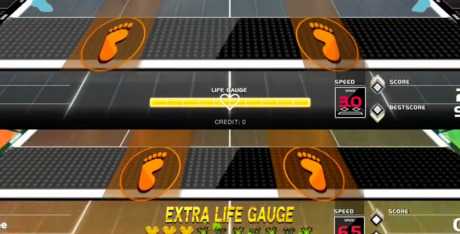
Keep the life bar in mind. Below the step zone is the life bar. It increases when you perform well but decreases when you perform badly. Under normal gameplay, you should not have to worry about it. In Extra Stage, the life bar is replaced with 10 heart symbols. Each time you miss anything but a Down or a Jump, you lose a heart. When you lose 10 hearts, you fail out of the level.
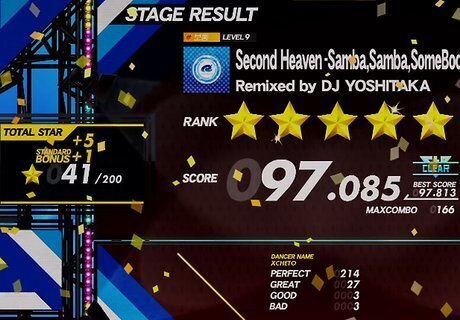
Collect stars by completing rounds. Each game gives you up to 5 stars, not counting mode bonuses. Standard mode will give you 1 bonus star per round. Premium mode will give you a large bonus. 90% or above: 5 stars 80% or above: 4 stars 60% or above: 3 stars 30% or above: 2 stars less: 1 star Stars can be used to unlock new songs.
Moves and Patterns
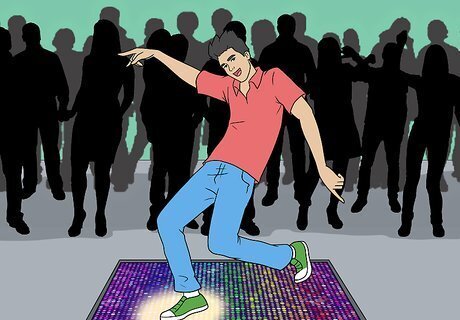
Learn dance moves and patterns. Dance Rush is just as much about accuracy as it is about flair and freestyle dancing. Learn some useful dance moves and memorize some common patterns. It will give your performance flair while increasing your ability to hit notes. Many dance moves are taught in the tutorial and lessons in the game.
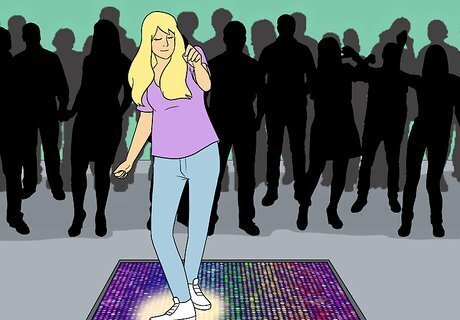
Learn the T-step. The T-step is a dance move where you stomp on one foot while you twist the other foot, moving yourself laterally.
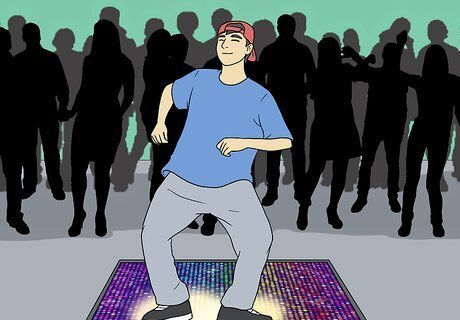
Learn the Crab Step. It is similar to the T-step, except that both feet twist at once. The feet should face the opposite direction at all times. Think "out, in, out, in" instead of "left, right, left, right".
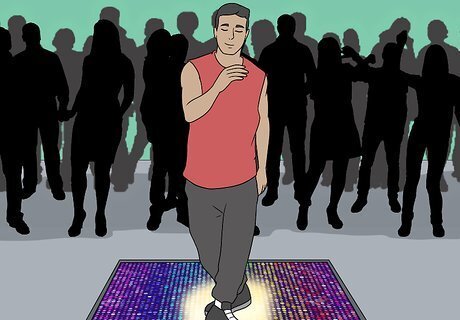
Learn the Charleston. The Charleston is a dance move where you twist your feet like in the Crab Step, while stepping forward and backward. This move originates from swing dancing.

Learn the Running Man. The Running Man is a dance move where you imitate someone running. You will most likely perform this move facing sideways. The T-step and Running Man are explained in the articles How to Melbourne Shuffle and How to Shuffle.

Do a crossover. A crossover is a pattern where a Left note appears to the right of a Right note, or vice versa. It causes you to twist your body and cross one leg over. You can also take crossovers as an opportunity to spin all the way around!










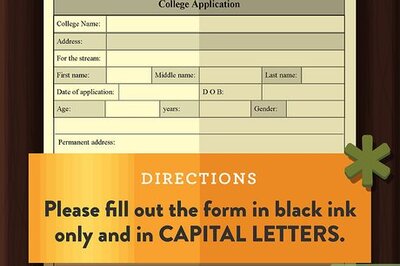






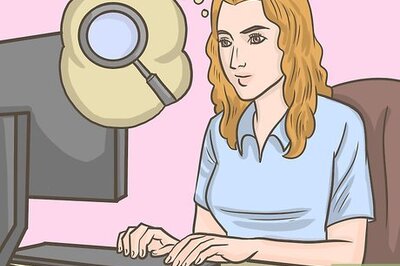

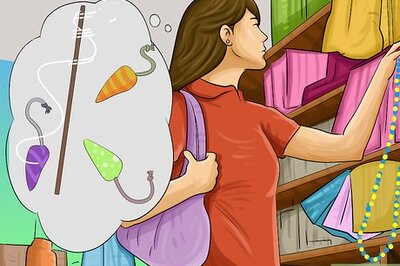
Comments
0 comment